5 Ways To Get The MOST Out Of Your Bubbler System
DWC is the UK's favourite growing method. Use your bubbler system wisely and it'll be your favourite friend
You’ll get bigger, better, faster growing plants for a very low cost.
Here’s how you get the very best results.
1. Control your Feed Temperature When Using a Bubbler
The hotter your nutrient solution, the lower your oxygen level. Bubbler systems depend on an aerated nutrient solution - when your oxygen level is high, nutrient uptake is greater.
Also, oxygen is great at keeping algae and diseases (like Pythium) at bay - it's why people sterilise their systems with liquid oxygen (Oxy-Plus 11.5%) between crops.

In recirculating bubblers, if your oxygen level drops and you get a problem in one pot, it can quickly spread to other pots as your nutrient solution is pumped round your system.
Always use a chiller to keep your temperature from rising - this'll keep your oxygen level high to ward off algae and diseases.
For optimum oxygen, keep your nutrient solution between 18oC and 20oC.
This will:
- Boost root growth
- Give you the best overall growth & yields
- Suppress root disease
There are tons of products that’ll help you monitor and control your feed’s temperature.
2. Watch the Water Level in each Bubbler
Don’t let your bubbler's water level run low!
As plants use nutrients and water, your pH can change. In a bigger body of water this makes less of an impact on your overall pH because a smaller percentage of your overall nutrient solution is used.
In short, you have fewer pH fluctuations in a full system.
Be sure to regularly check your nutrient solution is topped up. IWS Oxypots actually have a fluid level indicator.
If you do struggle with pH, try using liquid silicon to stabilise it - SHOGUN Silicon is great.

3. Monitor your Nutrient strength (CF) When Using a Bubbler
In a bubbler system, the root zone is oxygen enriched. This means nutrients are more readily available to your plants.
As a result, your plants will thrive on a lower nutrient strength. Go in there too high and you could actually overfeed them.
You can check your nutrient strength with a CF meter. It’ll tell you how many dissolved salts are in your solution.
The stronger your feed, the higher the CF will be (only pure water has a CF of 0).
Aim for a nutrient strength of around:
Soft Water
- 6 – 8 CF in vegetative growth
- 12 - 16 CF in full bloom

Hard Water
- 10 – 14 CF in vegetative growth
- 16 - 20 CF in full bloom
The exact CF you aim for depends on what you’re growing…learn more in our Beginner’s Guide to CF.
4. Keep an Eye on your pH when you use a Bubbler
Your pH tells you how acidic or alkaline your feed is and affects your plant’s ability to absorb nutrients (More about pH here).
For the best results in a Bubbler, keep your pH between 5.5 and 6.5.
Get it wrong, and some nutrients will be unavailable to your plant – you can experience nutrient deficiencies as a result.
Remember, the pH of your feed changes as nutrients are used by your plants.
You’ll need to routinely check and adjust the pH level of your feed if you drift outside the safe range. Careful not to tweak the pH unnecessarily - you could over-adjust.
Here are the tools you’ll need to control your pH.
5. Use the Right Nutrients for a Bubbler
When growing in a bubbler AVOID anything that uses organic ingredients, such as seaweed and molasses. These kinds of products are biologically active and don’t respond well to the oxygen in your bubbler - they become oxygenated.
- They can block pumps, as they’re often very sticky
- They’re biologically active - they ferment and foam (worse when oxygenated!)
- They’ll ruin your air stones
- They lower oxygen levels in your bubbler
ALWAYS USE clean mineral nutrients that aren’t affected by oxygen.
To be safe, it’s best to use ones designed specifically for bubblers.
We recommend using:






